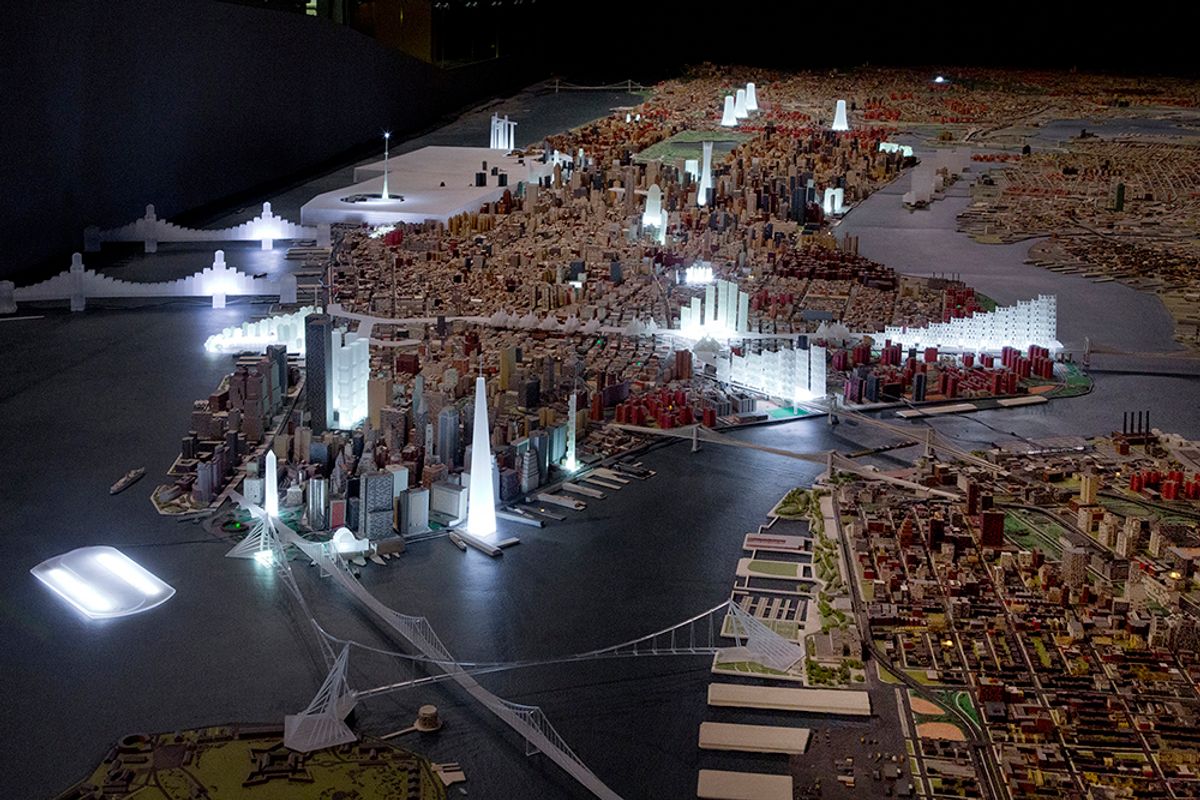Can you imagine if a giant dome covered the width of Manhattan between 21stand 64th streets? Conceived in 1960 as an energy saver by Buckminster Fuller, the dome is one of several audacious unrealised designs for the Big Apple explored in the Queens Museum exhibition Never Built New York (until 18 February 2018). Prints, drawings, models, installations and animations tell the stories, going back 150 years, of these designs by architects from Sanford White to Zaha Hadid. The lively presentation includes a gallery with geographically-arranged exhibits and 3D models of around 70 unrealised works placed on their would-be locations on the museum’s famous Panorama of the City of New York. Another gallery focuses exclusively on projects designed for the museum’s location, Flushing Meadows Corona Park, including the Westinghouse Pavilion, conceived for the 1964 World’s Fair by Eliot Noyes, presented in a novel model form: a usable bouncy castle!
Cristóbal de Villalpando: Mexican Painter of the Baroque (until 15 October) at the Metropolitan Museum of Art looks at this highly inventive artist from Mexico City, whose Adoration of the Magi (1683) was recently stumbled upon by an art historian in the office of the president of Fordham University in the Bronx. The work has since been restored by a conservator at the Met, Dorothy Mahon. The 11 works in this exhibition—many shown in the US for the first time—include the breathtaking two-panel, 28ft-tall Moses and the Serpent and the Transfiguration of Jesus (also 1683), an unprecedented pairing of these Old and New Testament stories made for a chapel in the Puebla Cathedral. The stacked canvases are exhibited in an open two-storey space to afford viewers a fuller grasp of the work's scale and the magnificent rendering of its upper register, where Christ floats radiantly against a pastel sky.
Rosemarie Trockel selected the works for her current solo show, Plus Quam Perfekt (until 28 October), at the Gladstone Gallery. Made over the past decade in a wide variety of media, from posters to a ceramic masks, Trockel picked the works specially for the high-ceilinged gallery space in a former townhouse. The objects might appear incongruous, but they have consistent themes such as use of “craft” materials (traditionally a “feminine” domain). The works, such as smokey-coloured acrylic cube placed low to the ground, provoke curiosity and ask you to look more closely.


